ARCHAIC MOTHS, WILD CHERRIES ... AND MORE
Last year, on the 13th of July, I spent the whole morning in the woods between the small inland town called Zminj and the city of Pazin, situated right in the center of Istra, the peninsula on which southern cape I live. The weather was warm and sunny, it was a typical summer day, and I found a nice diversity of small arthropods to observe and photograph through the macro lens.
You can see a small moth in this opening photograph. A small moth from the Micropterigidae family. The colorful object, blurred in the background, that looks like a setting or rising sun, is just a small fruit, actually.
One of a handful of wild cherries on the Prunus avium tree.

It was early in the morning and I saw about a dozen small moths resting on the leaves of the lower branches of the cherry tree. Species from the Micropterigidae family are also known as archaic mandibulate moths. The species I encountered on that beautiful summer morning is the Micropterix allionella. In the following photograph ...
... especially if you enlarge the picture by clicking on it, you'll be able to take a good look at all the details of the moth's external anatomy. The head is definitely pretty peculiar. The moth resembles a tiny goat or antelope. Unique among the Lepidoptera (moths & butterflies), moths from the Micropterigidae family have chewing mouthparts instead of a proboscis. They use their mandibles mainly to chew the pollen grains. Today, after reading a bunch of studies & articles on the Internet, I learned that the common ancestor of moths and butterflies we can see today was probably a small species from the late Carboniferous, a species in which adults had mandibles.
Besides these scientific facts, I'll tell you a few words about my silly impressions regarding the Micropterix allionella. I mean, aren't they cute? Look at that face and the stylish orange hairstyle on its top. Imagine this tiny insect as a sheep-sized animal. The moth would look like some kind of shiny, winged gazelle, or something like that.

On the leaves of some herbaceous plant down on the forest floor ...
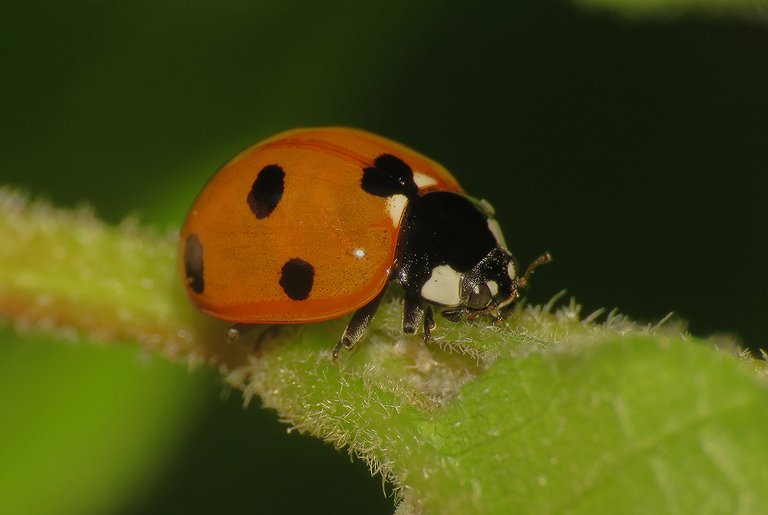
... I photographed a lady beetle. The Coccinella septempunctata.

Here you can see an interesting spider found on the herbaceous vegetation near the narrow path that leads through the forest.
The name of the species is Episinus angulatus.
The family is Theridiidae. Although present throughout Europe, the species isn't common and is a relatively rare encounter everywhere. The web of this spider roughly resembles the letter "H" and consists of only a few threads that reach from the lower branches of shrubs or herbaceous plants down to the ground. In the following photograph ...
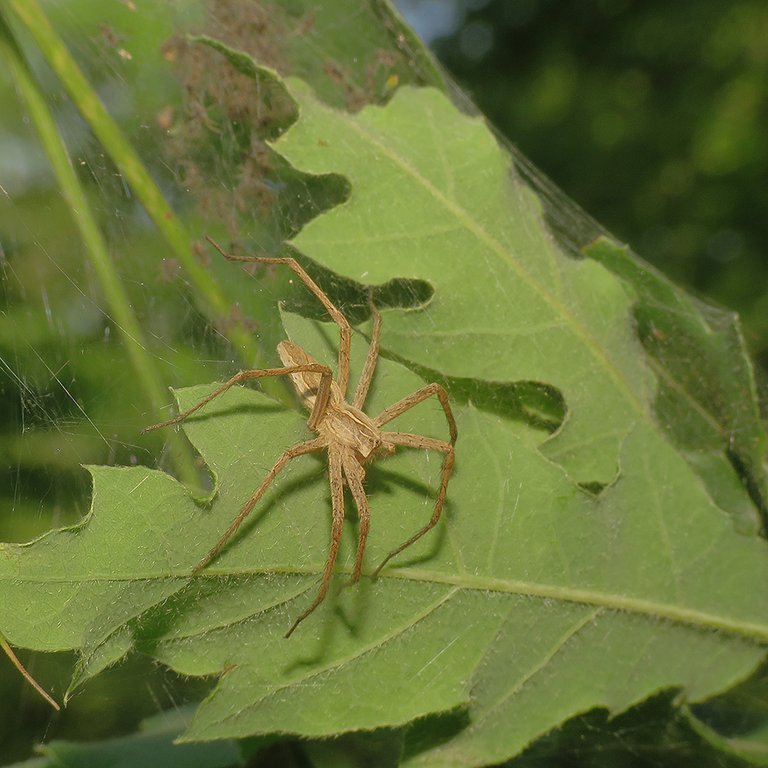
... you can see a much bigger spider from the Pisauridae family.
The name of the species is Pisaura mirabilis ...

... and the spider shown in this set of photographs is a female. If you take a good look at the following photograph ...
... especially if you enlarge the picture by clicking on it, you'll notice a cluster of spiderlings blurred in the background. Females build nests in which the tiny young spiders spend the early stage of their life. In the foreground of this shot, you can see a Pisaura mirabilis female guarding the nest built among the leaves of the young, shrub-like oak tree.
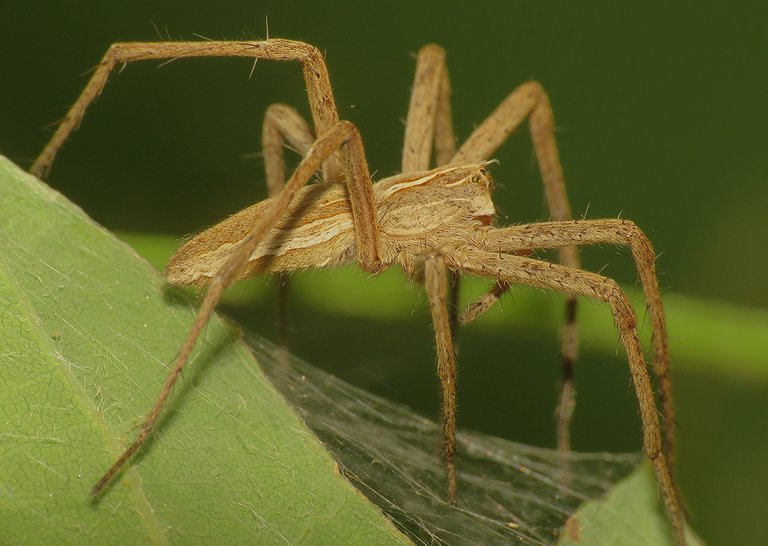
Here you can take another up-close look at this very common, but always interesting and remarkable spider. A bit further ...
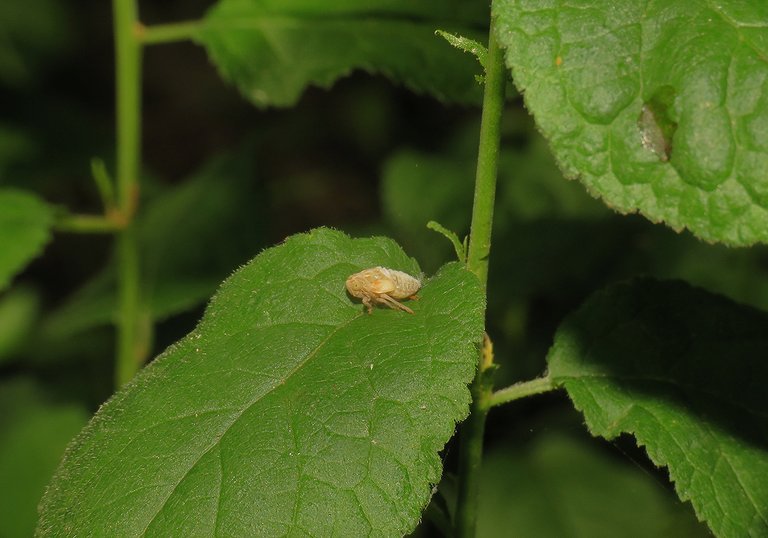
... I noticed an insect on one of the large leaves of a fairly tall and robust herbaceous plant. The insect was quietly resting ...
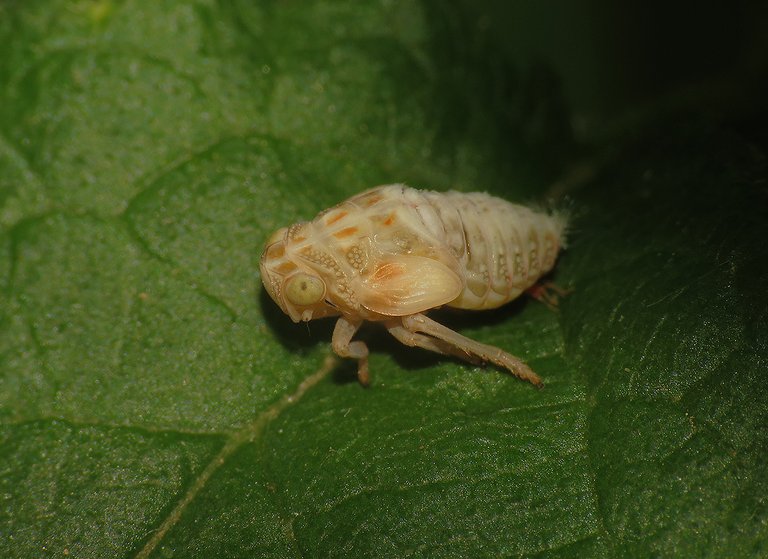
... so I was able to come closer ...

... and recognize the species. This is an Issus coleoptratus nymph ...
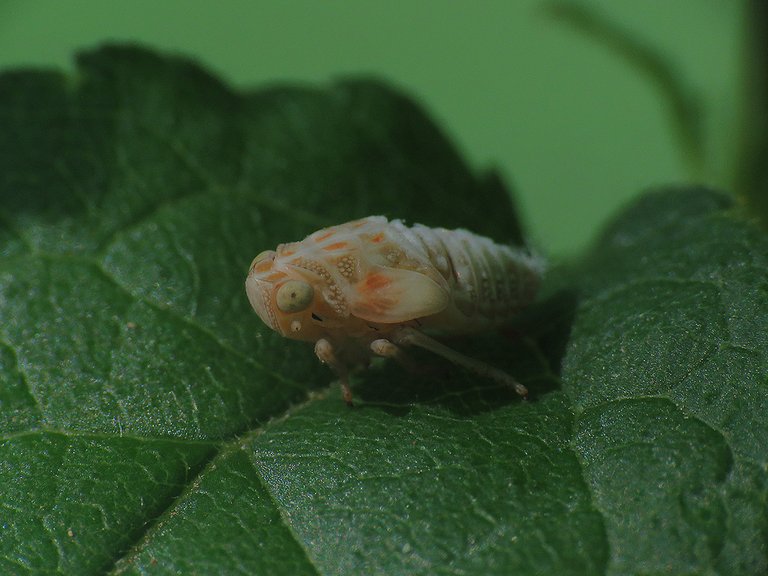
... that has recently gone through the molting. That's the reason for its soft, pale appearance and very calm demeanor.
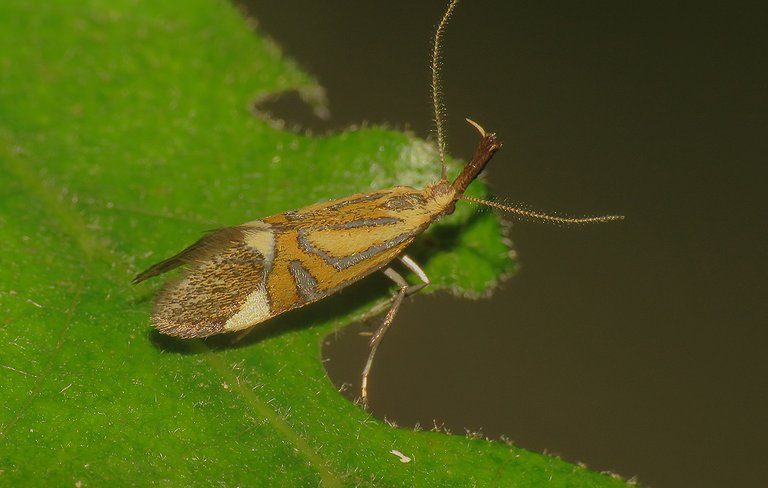
This interesting moth belongs to the Oecophoridae family. The name of the species is Alabonia geoffrella. The larvae feed on rotting wood.
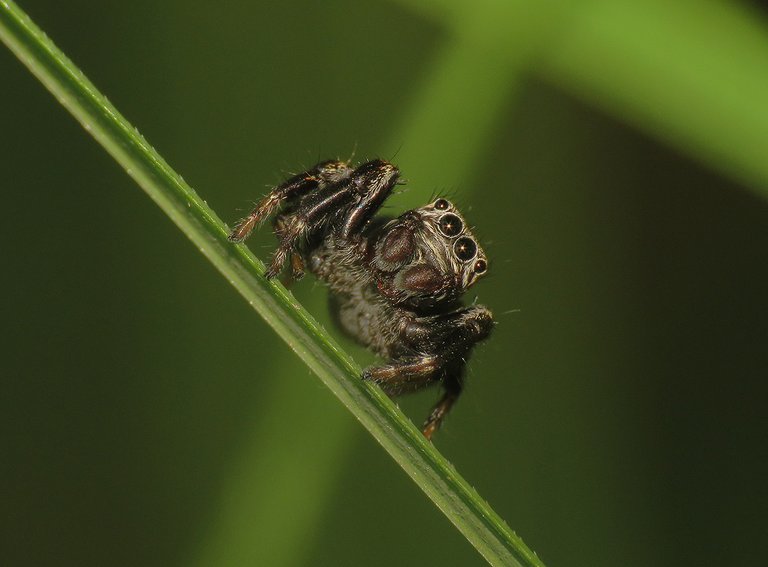
you can see a cute little jumping spider looking at you in this shot.

I can't tell you the name of the species.
The family is Salticidae, of course. That's all I can say in this segment of the post.
In this photograph, the spider is cleaning one of its hind legs.
I followed the jumping spider for about ten or fifteen minutes, and then ...
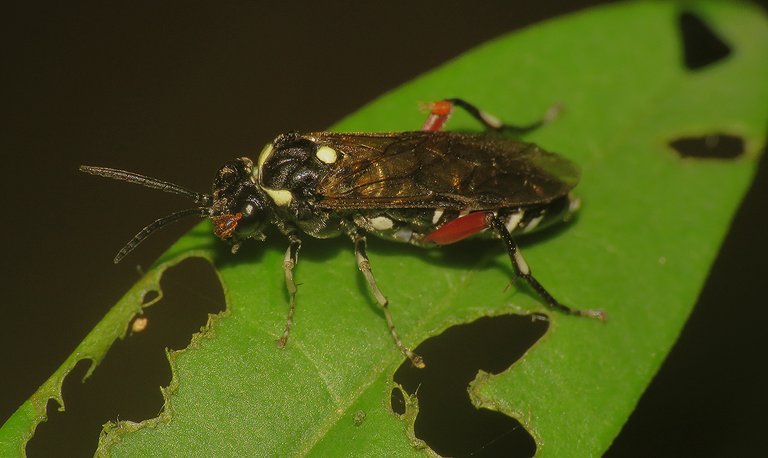
... I noticed a sawfly on one of the nearby plants.
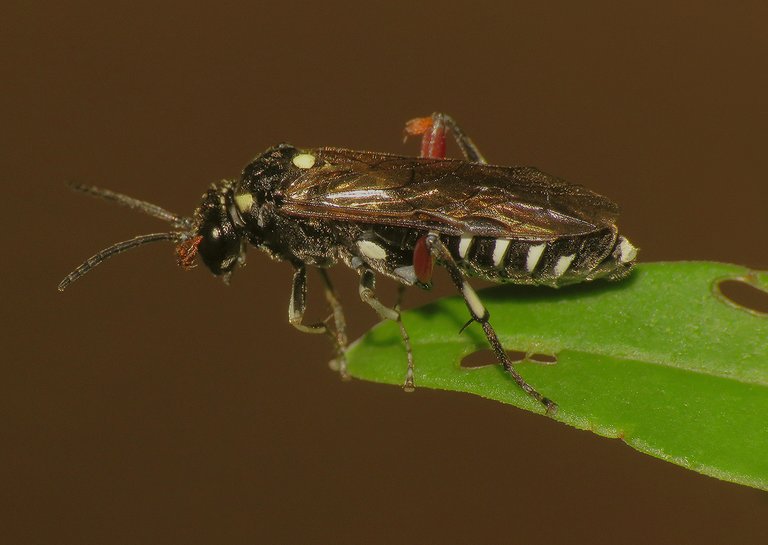
Today, while preparing the post, I found out that this is the Macrophya punctumalbum ...
... from the Tenthredinidae family. I don't remember seeing this species before or since that summer encounter in the woods about sixty kilometers north of my hometown.
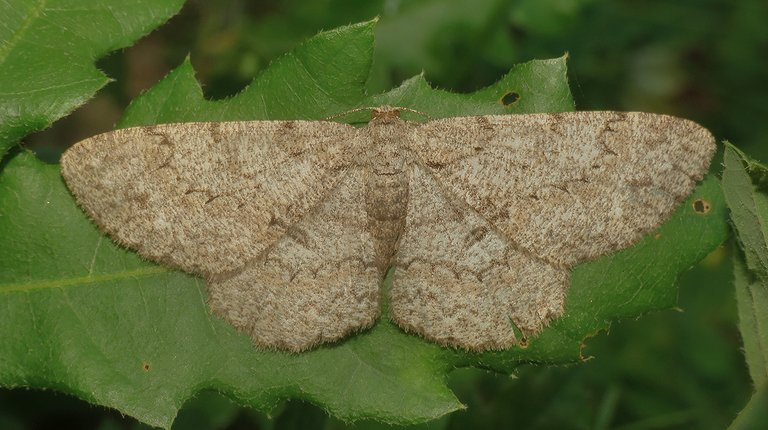
This fairly large moth from the Geometridae family was resting on one of the leaves of a young oak tree. Can't tell you the name of the species because quite a few very similar ones are present in this area. It could be the Hypomecis punctinalis. Or the Hypomecis roboraria. Or something else.

Another Episinus angulatus spider was resting on the grass under the small tree.
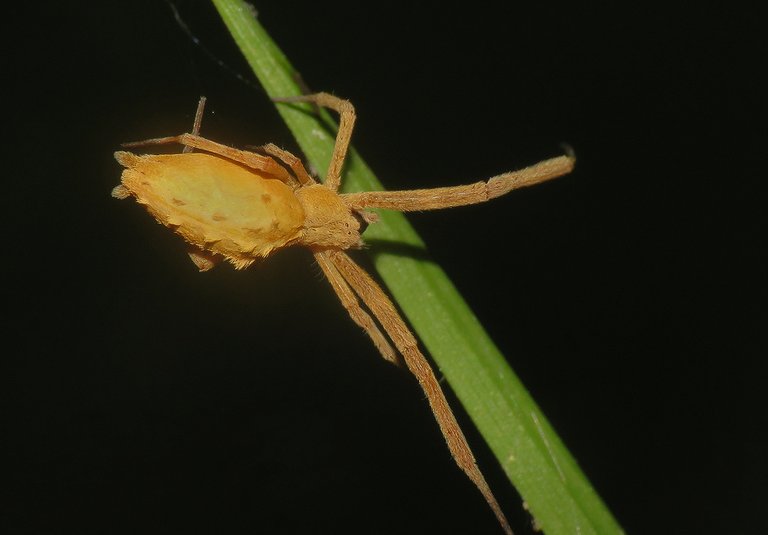
This is the Uloborus walckenaerius.
A spider from the Uloboridae family.
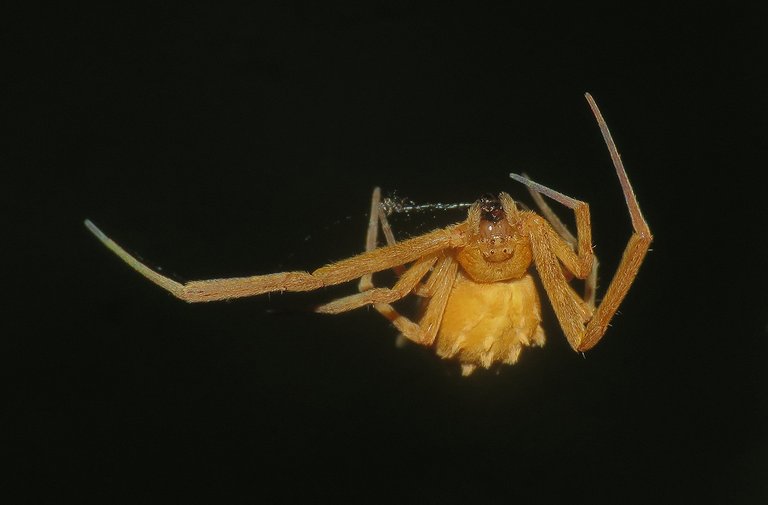
Just like the other species from that unique family, Uloborus walckenaerius has no venom glands.
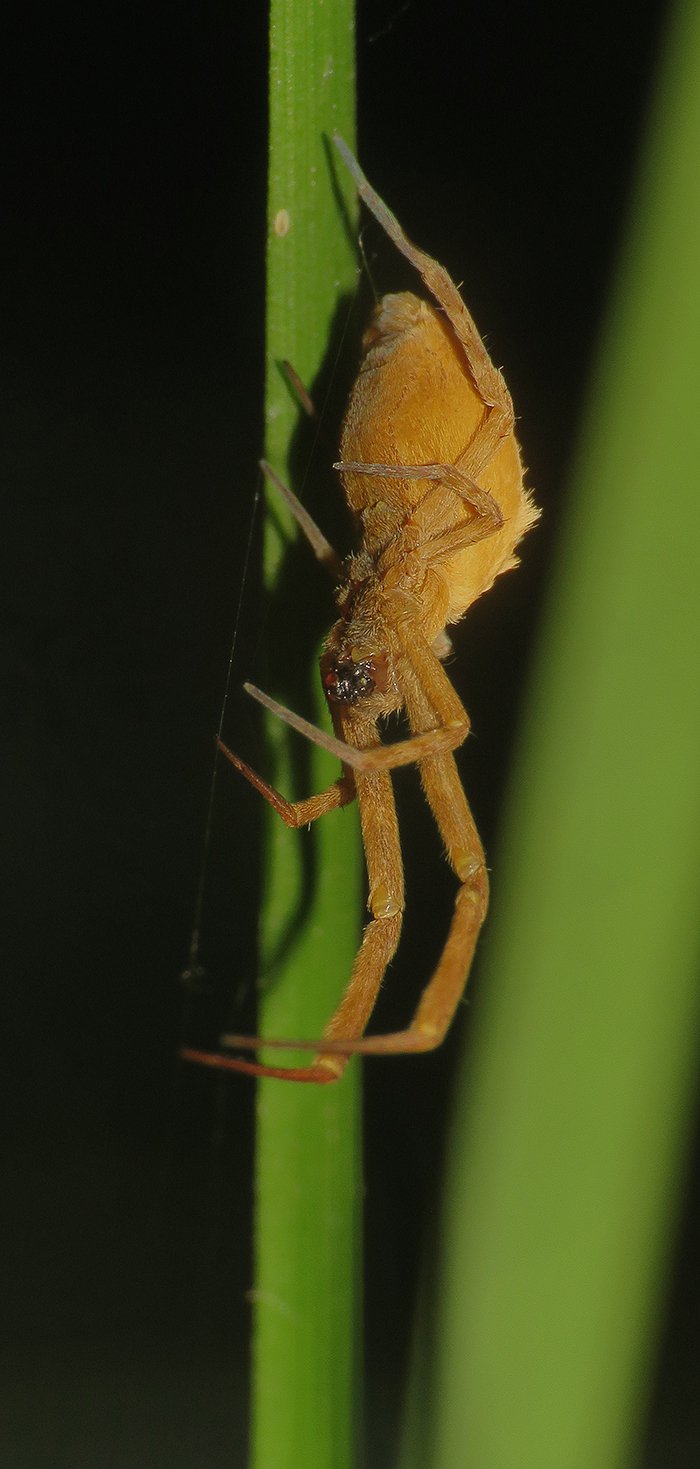
This spider weaves horizontal webs close to the ground.
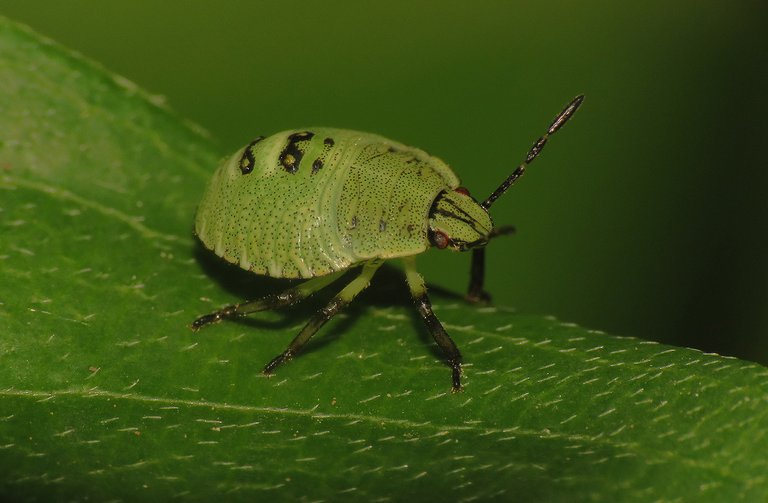
The lovely green shieldbug shown in this photograph is a Palomena prasina nymph.
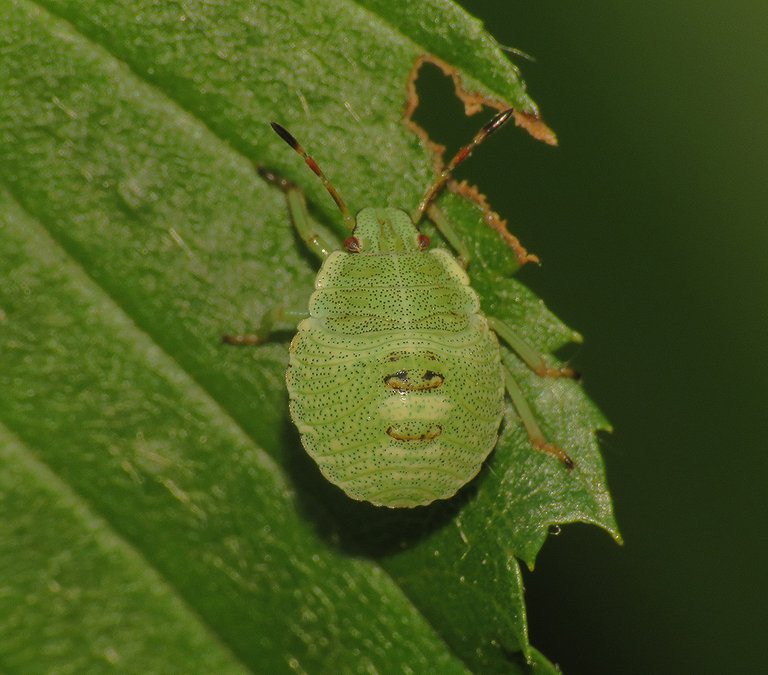
Here you can see another nymph of the same kind. Not far from these young shieldbugs, on the leaves of the same climbing plant that I can't identify today because I didn't photograph the plant parts from a distance that would allow identification ...
... I came across an interesting situation that I've never witnessed before.
Two very small insects were frenetically running around the leaf and behaving in a way that resembled some kind of ritual.
Today, after hours of searching the Internet, I found out that these are some small parasitic wasps from the Encyrtidae family. But I still have no idea about what species this could be.
The action was very fast, and therefore hard to follow through the macro lens.
I needed more than an hour to get these photographs. The majority of shots weren't good enough to be a part of this or any other post.
Was this some kind of pre-mating thing? Or something related to the territory? Or both. I don't know. But if I had to give my personal opinion, I would say that this behavior has a lot to do with mating.

The lovely moth shown in this photograph belongs to the Oecophoridae family. The name of the species is Harpella forficella. The larvae live in small groups on decayed wood and under the bark. They feed on the mycelia of various fungi that grow on decaying wood.
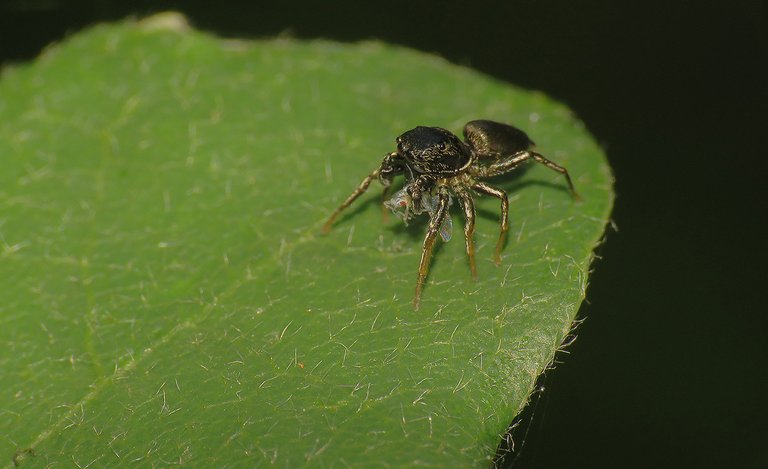
About half an hour later, I found another jumping spider. Heliophanus cupreus is the name of this Salticidae species, and the spider shown in this and the following photograph is a male.
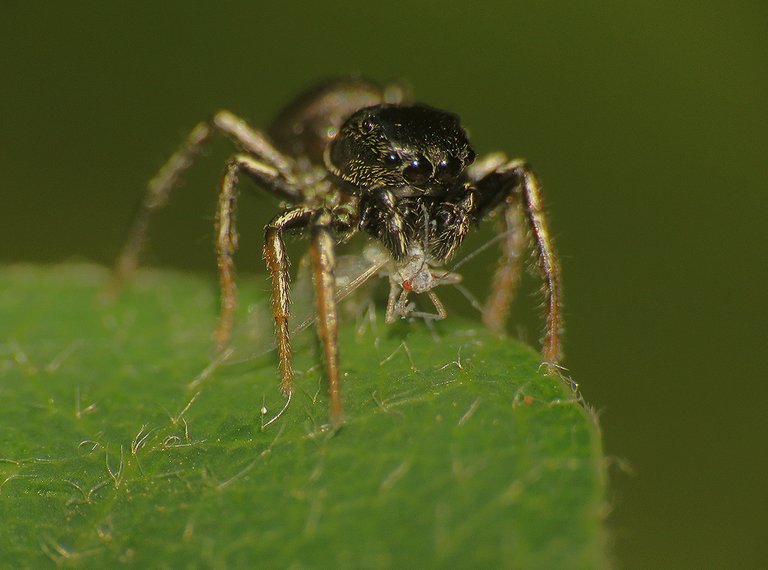
Here you can take a better, more up-close look at the small arachnid and the even smaller prey in its fangs. The spider has caught an aphid. Or some similar and related hemipteran insect.
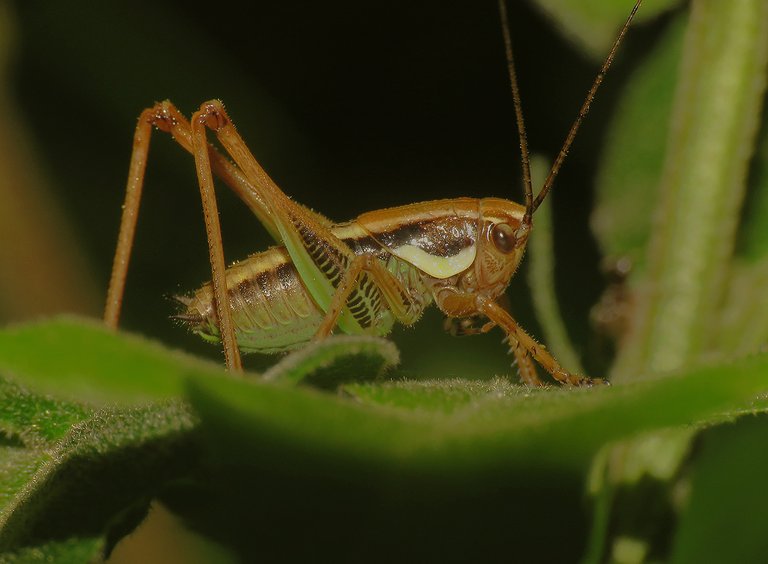
This is a bushcricket nymph. The name of the species is Eupholidoptera schmidti.
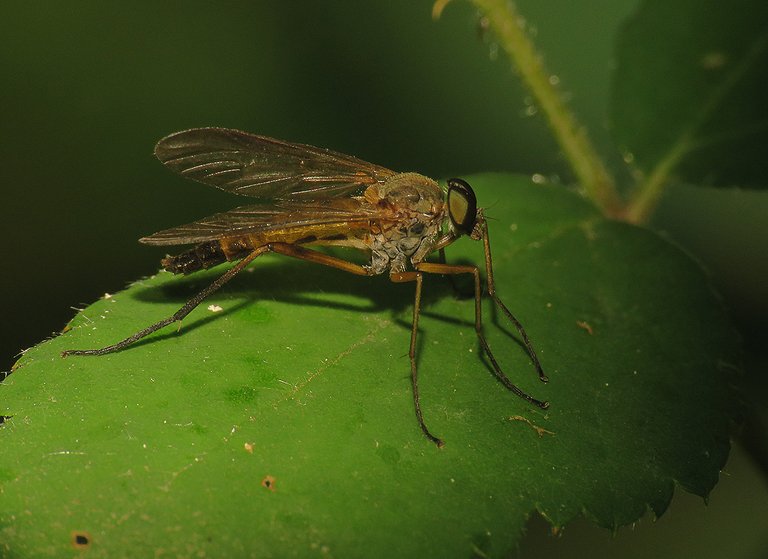
Here you can see the Rhagio tringarius, a fairly big fly from the Rhagionidae
family.
On the way back home, a couple of kilometers from Zminj, I came across the road crew busy renovating the white lines on the asphalt. In this shot, the workers look a bit like dancers. A boy band performing for a promotional video.
And that's it. The following links will take you to the sites with more information about some of the protagonists of this post. I found some stuff about them there.
https://en.wikipedia.org/wiki/Prunus_avium
https://en.wikipedia.org/wiki/Micropterix_allionella
https://en.wikipedia.org/wiki/Coccinella_septempunctata
https://www.inaturalist.org/taxa/318916-Episinus-angulatus
https://en.wikipedia.org/wiki/Pisaura_mirabilis
https://en.wikipedia.org/wiki/Issus_coleoptratus
https://ukmoths.org.uk/species/alabonia-geoffrella/
https://www.sawflies.org.uk/macrophya-punctumalbum/
https://en.wikipedia.org/wiki/Uloborus_walckenaerius
https://www.britishbugs.org.uk/heteroptera/Pentatomidae/palomena_prasina.html
https://en.wikipedia.org/wiki/Encyrtidae
https://bugguide.net/node/view/517238/bgimage
https://en.wikipedia.org/wiki/Harpella_forficella
https://www.flickr.com/photos/63075200@N07/8758790577
https://en.wikipedia.org/wiki/Heliophanus_cupreus#:~:text=The%20male%20has%20a%20long,may%20have%20uniformly%20dark%20legs.
https://en.wikipedia.org/wiki/Rhagio_tringarius
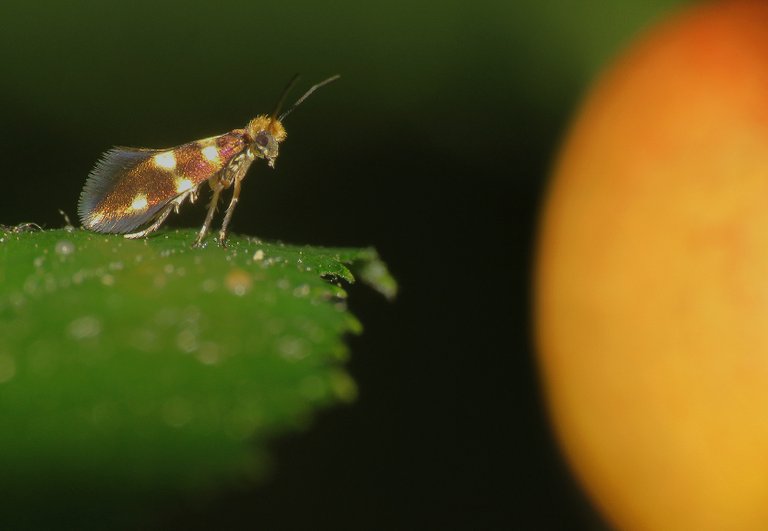
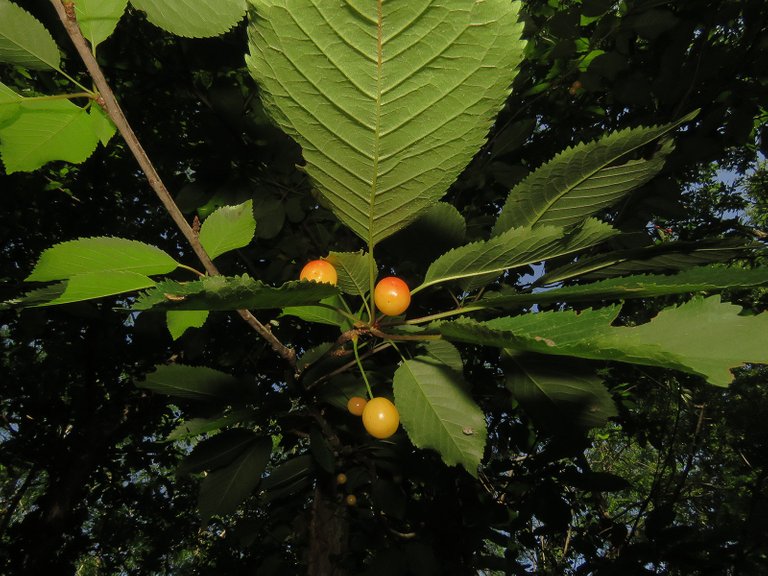

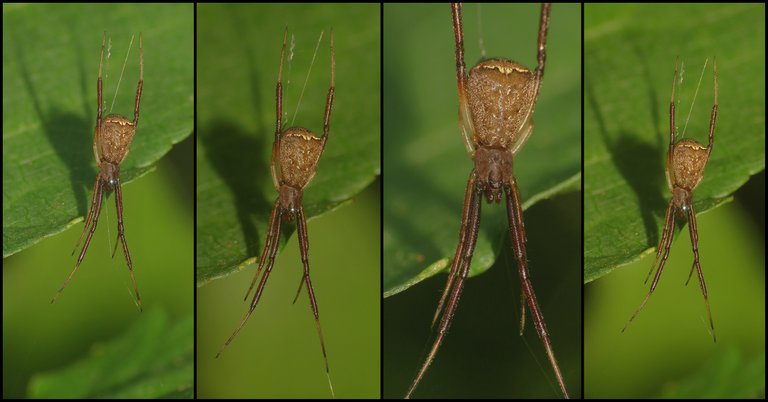
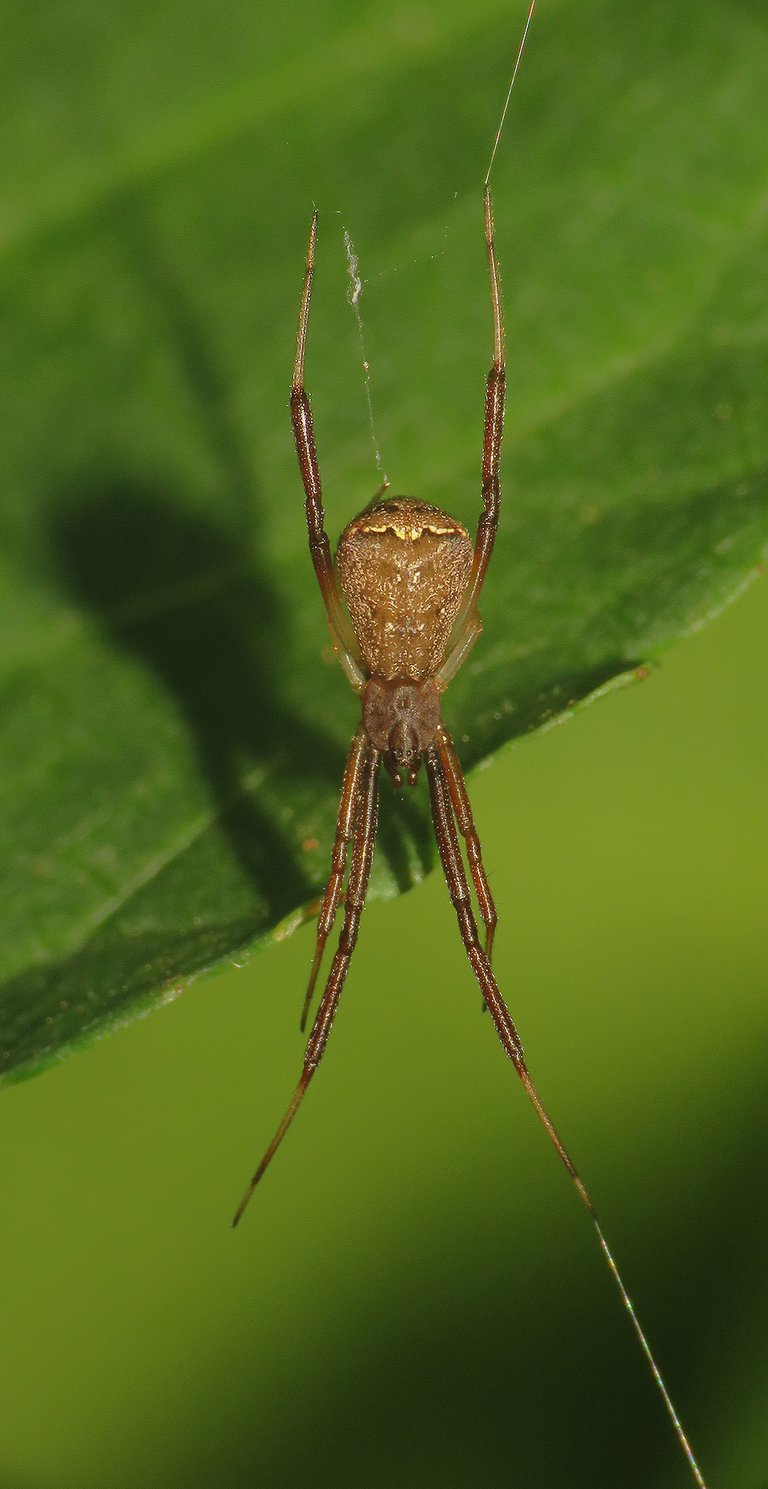

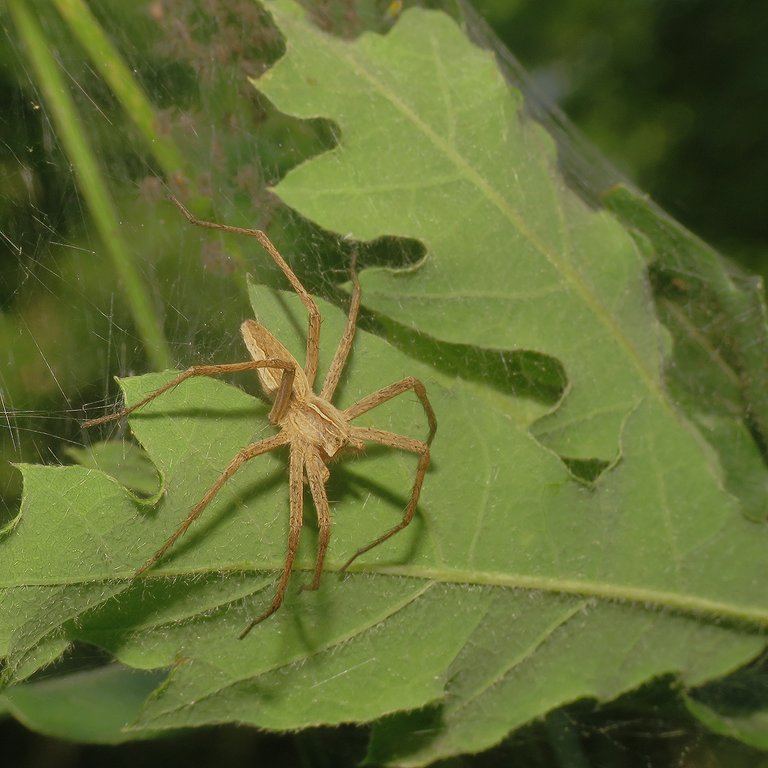




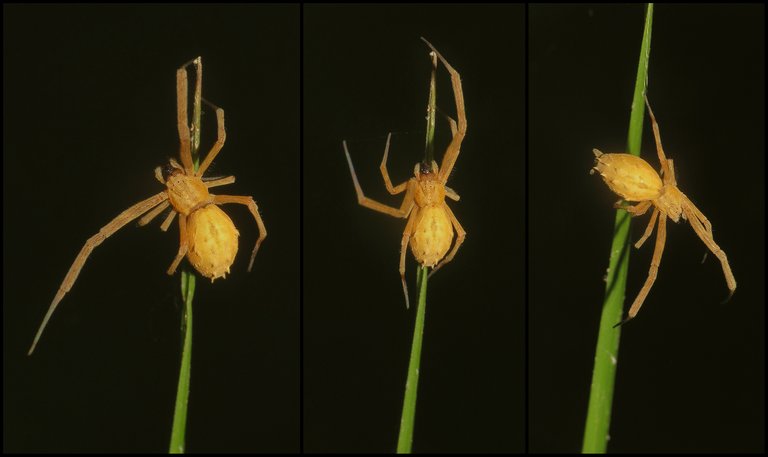


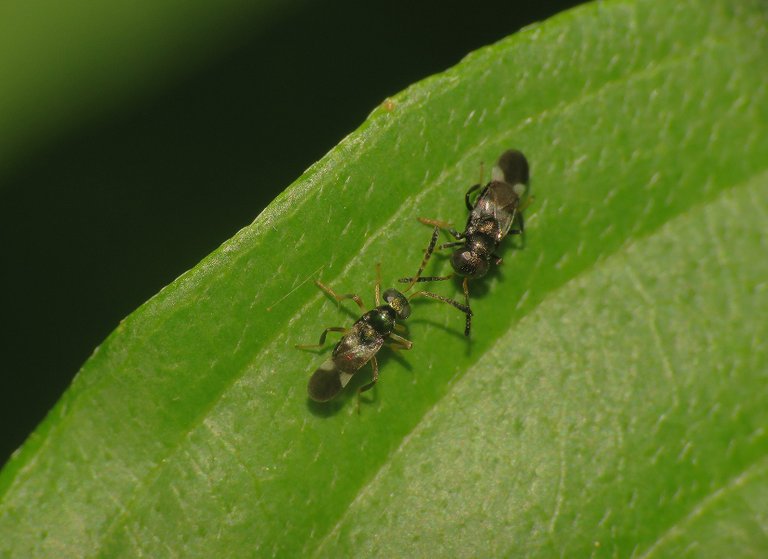
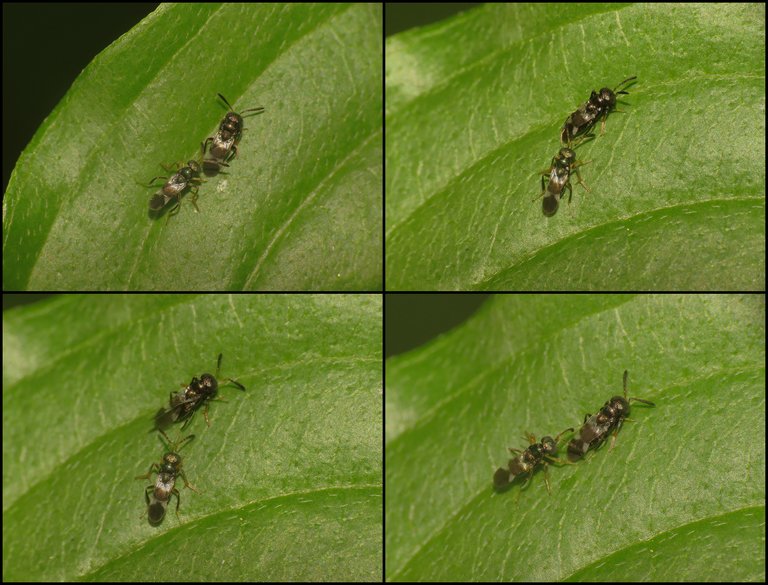



Oh wow what an expose!
Seeing all those varieties of bugs so close really opens the eyes! You can actually see the eyes on those spiders and others look like mini versions of some animals.
Thanks for all the time you put into gathering information on each one so that we could research each and learn.
Bravo!!!
Thank you. 🙂 Glad you like the post. Observing and photographing the life of small animals through the macro lens is my favorite outdoor activity.
@borjan Great photos, buddy! ❤️Today, I tried to make photos on a little spider but no experience.. 😁however ..😅 If u want u can see my last post about LeagueOfLegends in my blog and can support me if you want.😇
I'll take a look. 🙂 I like video games and posts about them.
Wow, you've attached some amazing photos as usual, you can actually see a lot of detail that with the naked eye is impossible.
The moths have some kind of beautiful colors that I cannot describe. They look really nice
You have got a nice photography session
you always succeed in taking pictures, your posts always make me excited to learn how to take pictures
After 12 or more images of insects, I'm ending with a rather weird back-side view of 5 men painting a a road😂😂
Lovely images as always, crazy how much clearer they are when i view from my laptop instead of android phone😮
😀
Wow! Amazing photography!
@lex-zaiya, check this out!
man those are some awesome macro shots my friend. I love the flash reflection on the jumping spider eye. And the first moth is like having a mohawk hair stile. so awesome. hahah
!LUV !LOLZ !PIZZA
@borjan, @ekavieka(4/5) sent you LUV. | tools | discord | community | HiveWiki |
HiveWiki |  NFT | <>< daily
NFT | <>< daily
lolztoken.com
Mutton Honey.
Credit: reddit
@borjan, I sent you an $LOLZ on behalf of @ekavieka
(1/6)
$PIZZA slices delivered:
jlinaresp tipped borjan
ekavieka tipped borjan
@technicalside(1/5) tipped @misshugo
lolzbot tipped hoosie
From the dance of the unknown wasp to that of the road workers -- what a treat this was!
🙂
Good grief!... Those are fantastic macros!... Just amazing... I'm "resuming" my hobby for macros after several years without taking those kind of photos... So looking at your photos is inspiring to me !... Thank you so much for sharing @borjan friend!
!discovery 37
!VSC
!PIZZA
@jlinaresp has sent VSC to @borjan
This post was rewarded with 0.1 VSC to support your work.
Join our photography communityVisual Shots
Check here to view or trade VSC Tokens
Be part of our Curation Trail
@jlinaresp ha enviado VSC a @borjan
Éste post fue recompensado con 0.1 VSC para apoyar tu trabajo.
Únete a nuestra comunidad de fotografía Visual Shots
Consulte aquí para ver o intercambiar VSC Tokens
Se parte de nuestro Trail de Curación
This post was shared and voted inside the discord by the curators team of discovery-it
Join our Community and follow our Curation Trail
Discovery-it is also a Witness, vote for us here
Delegate to us for passive income. Check our 80% fee-back Program
https://twitter.com/jalp21/status/1653586105038454784
#POSH
!BBH
@borjan! Your Content Is Awesome so I just sent 1 $BBH (Bitcoin Backed Hive) to your account on behalf of @jlinaresp. (2/5)
I often get amazed on your photography. It's my first time to see the wild cherry.
Nice photos of these tiny insects! You’re the insect whisperer! Hahaha. The brown spider looked very handsome; I prefer these brown ones to black ones! The black ones reminded me of big black and aggressive scorpions in my garden! The jumping spider should be ten times bigger so that I could spot them more easily around the house. We have several jumping spiders but I couldn’t find where they actually live.
Funny, all the big geckos have disappeared, only small geckos are left behind. I hope my cats didn’t hunt them at night!
Life is too busy for me these days. Too much work in the garden.
Have a nice day!
Thank you. 😀 Have a great day. Greetings to your cats too.
Thank you very much! My cats say ‘ meow, meow’ to you too.
Love to see more photos of your cats. 🐈🐈
😀🐱😀
Nice photography
una pregunta amigo que tipo de lente usaste y modelo de camara me gusto mucho tus fotos
Camera Canon PowerShot SX60 HS
https://www.pcmag.com/reviews/canon-powershot-sx60-hs
Macro lens Raynox DCR-250 snap on
https://www.cameratips.com/recommendations/raynox-dcr-250
thank you my friend for the information I will take it into account
I am getting together to buy one
very nice display of insect pictures.
The first moth was really interesting. The Alabonia geoffrella moth has intersting markings and that funny head. The iridescence on the Harpella forficella moth was so pretty! Lots of cool stuff in this post.
We use to catch and collect lady beetle when we were kids, they use to lighten up in the dark creating a beautiful scene to watch.
Congratulations, your post has been upvoted by @dsc-r2cornell, which is the curating account for @R2cornell's Discord Community.
Lol the works do look like dancers - the village people !
!LOLZ
lolztoken.com
He had skeletons in his closet.
Credit: marshmellowman
@borjan, I sent you an $LOLZ on behalf of @hoosie
(8/10)
Rumor has it The LOLZ Project runs on !PIZZA
I always thought it was only Butterflies that look pretty, but some Moths can also appear quite stunning in different colours. Awesome macro shots indeed!
!LOLZ 😎
lolztoken.com
Every judge knows bananas splits.
Credit: reddit
@borjan, I sent you an $LOLZ on behalf of @fun.farms
(4/10)
Are You Ready for some $FUN? Learn about LOLZ's new FUN tribe!
Great and nice photos of all these mini insect's. I do not have any knowledge at all but since I started reading your posts I also get to know a lot about them. The insect is, there must be something special about her, the way you have told us all about it.
Really very good photos of insects I really like
Such a great shots. Amazing 👏
Thank you. 🙂 Glad you like the post.
@technicalside look at the jumping spider !!
This is wonderful as always!!
!LUV
@borjan, @misshugo(2/3) sent you LUV. | tools | discord | community | HiveWiki |
HiveWiki |  NFT | <>< daily
NFT | <>< daily
I want one😊😊the other spidersbare ugly as hell though but the jumping one... They look like kiddos😂😊😊
!PIZZA
!LUV
@misshugo, @technicalside(1/3) sent you LUV. | tools | discord | community | HiveWiki |
HiveWiki |  NFT | <>< daily
NFT | <>< daily
I am fascinated with all these sharp images, it is amazing the beauty that without the help of this lens we would miss. Thank you for giving us this precious publication.
Thank you. 🙂 Glad you like the post.